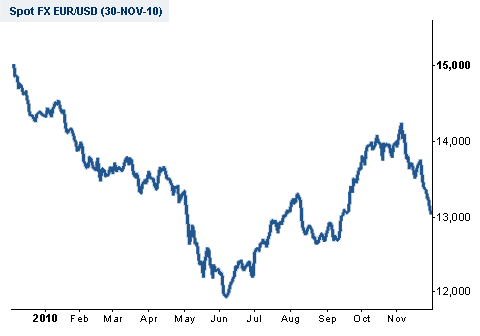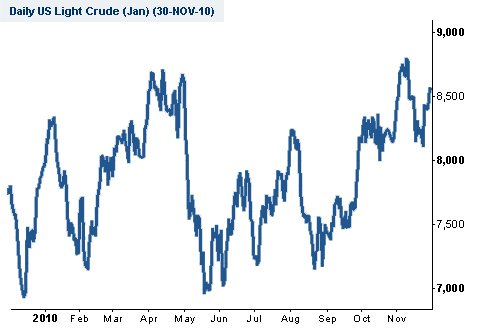The Month Ahead
Welcome to The Month Ahead, our regular overview of what happened in the markets last month and pick of what to look out for over the coming month.
November was not short of excitement for traders across a variety of markets and this is a theme that could well continue into December.
The Federal Reserve’s statement announcing its latest round of quantitative easing in the US – dubbed ‘QE2’ – gave stock markets a boost and pushed the FTSE® out to its best level in more than two years. However, the Irish bailout at the end of November brought back familiar worries for investors and weighed on sentiment.
The stability of European economies is likely to be in focus for traders as we head towards the end of 2010. Despite the EU bailout being agreed for Ireland, many are concerned that this does not draw a line under the crisis and attention is now firmly fixed on Spain and Portugal. This problem seems unlikely to be going away in the short term and the potential for unexpected news occurring at any time could make for some cautious trading.
There are the usual big monthly announcements to put in the diary in December, with the first of these – the latest US non-farm payrolls – having been already announced. Expectations were for around 150,000 jobs to have been added, but the report revealed a disappointing 39,000 rise. Stock markets seem to have shrugged off this news, however, in a demonstration of the short-term strength we’ve seen recently.
Euro slumps to two-month low
November started off positively for the euro, with the recovery that started in June appearing as if it was set to continue through to the end of the year. When the Federal Reserve announced its $600 billion injection into the US economy, the news weighed on the dollar and the result was EUR/USD hitting nine-month highs. However, as the situation in Ireland developed and it became clear that some sort of bailout was going to be needed, the euro was once again the major casualty and by the end of the month it had dropped around 1300 points from those early highs.
It is likely to be one of the main markets to watch in December as concern about the spread of the crisis to other countries develops. In late August/early September, EUR/USD did find support ahead of the 1.2500 area – it remains to be seen whether traders are going to take the view that this losing streak for the euro is overdone and it starts to reflect value again at these levels.

Oil briefly sets two-year highs
With Ireland and the eurozone taking centre stage for much of the month, traders could be forgiven for missing out on what was happening in other markets, but a knock-on effect of the Fed’s boost for the US economy was that crude oil hit its best levels since late-2008 – with the January contract briefly breaking above $88 per barrel. This has proved to be short-lived so far, but it has perked up interest in oil after a somewhat sideways range bound year.
Of course the price of oil is a barometer for how markets feel about industrial activity and this picture is still a little mixed. However, after the slide back from these highs, oil did seem fairly well supported around the $80 mark, so it remains an interesting market to keep an eye on in the weeks ahead.
<

IG Index provides an execution-only service. The material above does not contain (and should not be construed as containing) investment advice or an investment recommendation, or, an offer of or solicitation for, a transaction in any financial instrument. IG Index accepts no responsibility for any use that may be made of these comments and for any consequences that result. This communication must not be reproduced or further distributed. IG Index is authorised and regulated by the Financial Services Authority (FSA Register number 114059).